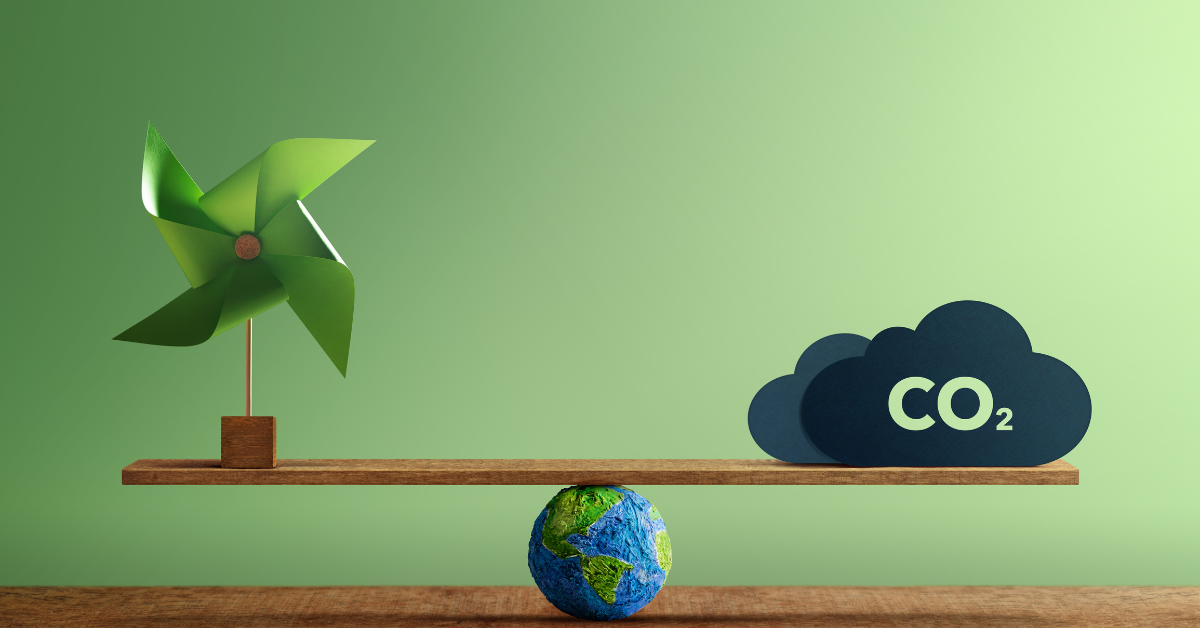
In a world that is constantly expanding and evolving, sustainability in every aspect of life is the way of the future. Governments and customers alike are increasing demands for more sustainable and ethical business practices.
The supply chain industry is one of the leaders in emissions and waste energy, but these challenges have brought with them a new wave of sustainable solutions.
Today there are more options for every company to take action and effectively reduce their supply chain footprint. The innovative, growing companies below are industry experts with actionable solutions to share.
Alt Tex
What they do
Alt Tex is a new company composed of entrepreneurs and scientists that have decided to change the way the fashion industry works. They have innovated a process that uses food waste to produce high-quality, sustainable textile products. Their synthetic material can help reduce wasteful practices in the fashion industry and has the potential to evolve into other industries as well.
Why it’s valuable
The fashion industry contributes an astounding 8-10% of the world’s GHG emissions and the production of polyester (used in over 60% of the clothing textiles and consuming 70 million barrels of oil per year) is a main culprit.
Alt Tex fabric is a ground-breaking innovation that will have long-lasting implications for the fashion industry as a whole and other branches of industry that use textiles, replacing high-waste polyester with their biodegradable textiles.
Whether your company holds a spot in the supply chain that will contribute to the development of these textiles or whether you will be using them to create your own sustainable products, you will be reducing your supply chain footprint and contributing to the health of the planet.
How to implement their solution
While Alt Tex is still in the process of commercializing their product, supply chain companies can still contribute to their mission and implement some planet-saving strategies into their practices.
Whether you would like to receive their innovative textiles to create your products, or you have food waste that you’d like to direct to them instead of to the landfill, the folks at Alt Tex will be happy to hear from you.
Evoco LTD.
What they do
Evoco LTD. Is a company that is replacing traditionally-sourced carbon with sustainable and regenerative plant-based carbon. They use trees and other plant matter to create biomass for ‘green’ carbon that is then used to create various bioplastics and other biodegradable materials commonly used in athletic products and footwear.
When these products are composted, they will contribute to the growth of more trees and plant matter to create a sustainable, renewable cycle.
Why it’s valuable
Evoco’s process eliminates the need for fossil fuel carbon, and this in turn maintains the balance of carbon in the atmosphere and lessens the rate at which climate change occurs. Using sustainable foams and other materials produced by Evoco LTD. will reduce your supply chain footprint and will allow you company to contribute to sustainable carbon extraction.
How to implement their solution
Replacing standard plastic and textile use with products from Evoco is the best way to contribute to their goal of creating a sustainable cycle for carbon extraction and development into various products. All of their products have a high percentage of plant-based carbon, and transitioning to those products will help your company find its way to more sustainable practices.
Genecis
What they do
Genecis is a company focusing on the science of plastic. They divert food waste from landfills, ferment those materials with special bacteria, and use the by-products of that fermentation to create biodegradable plastic.
This plastic degrades completely in 30 days in a compost environment, and if it does happen to escape to the ocean, it will degrade in only 1 year.
Why it’s valuable
Not only does diverting food waste reduce the rate at which landfills fill, but the biodegradable plastic created from that food waste will replace standard non-degradable plastics throughout the globe, reducing pollution and contributing to beneficial compost growth.
Using Genecis plastic in your supply chain will reduce your carbon footprint and divert even more materials from landfills.
How to implement their solution
If you’d like to reduce the environmental impact of your supply chain, Genecis plastic is the way to go.
There are three main ways you can work with Genecis to implement this plastic-reducing endeavor: use Genecis plastic to replace standard plastic use in your manufacturing processes, create new products with their bacteria, or license their technology to produce your own plastic within your facility.
BrainBox AI
What they do
BrainBox AI has developed what is essentially a brain for your HVAC system. Their AI technology integrates into your HVAC system in order to learn the heating and cooling patterns and how your building responds to external temperature and weather changes. Then, it will regulate each component of your system in order to maintain set temperatures and eliminate energy waste.
Why it’s valuable
HVAC systems are one of the most wasteful systems in a building, and they also draw a lot of power: up to 50% of a building’s energy consumption goes to the HVAC system, and as much as 35% of that energy can be wasted.
Using the BrainBox AI technology can lower your carbon footprint by 40% and HVAC operation costs by 25%. Plus, you’ll end up extending the life of your HVAC system and increase the comfort of your staff. Say hello to increased productivity and goodbye to unnecessary costs.
How to Implement the Strategies
If implementing this autonomous AI solution sounds like a good deal to you (and you’re right, it is), get in touch with BrainBox AI staff to discuss installation. It can be integrated into any building size and layout, so no matter where your facility sits in the supply chain, you can start saving energy and reducing your carbon footprint.
Extract Energy
What they do
Extract Energy has designed a heat engine that converts waste heat from industrial factories and power plants into electricity. This innovative technology is easy to install, manage, and scale as your production changes. The engine can be affixed to multiple waste heat streams in order to fit into any company’s manufacturing and/or processing facility.
Why it’s valuable
The Extract Energy heat engine can dramatically reduce the amount of waste heat your facility is releasing into the atmosphere. Eliminating emissions will reduce your supply chain footprint, and converting that heat into usable electric energy can reduce operation costs and improve efficiency.
How to implement their solution
If you’re interested in helping Extract Energy perfect their system, give them a call. They’ll assess whether your site is a good candidate for pilot installation of their heat engine units. If your site meets their criteria, congratulations! You can start reducing your carbon footprint immediately. If not, you can reach out again once they are ready for full-scale implementation across the industry.
Xos
What they do
Xos is a leader in battery-operated transportation vehicles. They make fleet vehicles in all sizes (Class 5 through Class 8) that run off of battery power alone, and they also supply companies with the power solutions for those vehicles and a highly intelligent management software to coordinate and monitor their fleet.
Why it’s valuable
A massive 95% of the world’s shipping energy still comes from fossil fuels, and as a result, the transportation industry accounts for around one fifth of the world’s carbon emissions.
Incorporating fully electric vehicles into supply chain transport fleets is valuable in three ways: it lowers operating costs, reduces downtime, and eliminates carbon emissions. Implementing transportation solutions like this is one of the fastest ways we can reduce our negative impact on the planet.
How to implement their solution
Initiating the changeover from gas-powered vehicles to electric is as easy as placing a call to Xos staff. One of their account executives will discuss your fleet and infrastructure needs to come up with a feasible implementation strategy to get your fleet operating with clean, sustainable energy as quickly as possible.
Norsepower
What they do
Norsepower is a second company tackling emissions in transportation, specifically shipping by sea. The company has designed an auxiliary wind propulsion system called Rotor Sail technology that is highly automated and reliable. They believe that bringing sail energy back into ocean transportation is the way to reduce and eventually eliminate carbon emissions from this transportation sector.
Why it’s valuable
More than 3% of global carbon emissions can be attributed to shipping vessels on water. This is equivalent to what the highest-emitting countries produce. Since the shipping industry is only accelerating, taking steps to counter these carbon emissions is vital.
The Rotor Sails designed by Norsepower can reduce consumption of fuel by as much as 20%, with an average between 5 and 10%.
How to implement their solution
Whether your supply chain incorporates passenger ships, cargo ships, tanker ships, or any other kind of ocean-going vessel, Rotor Sails can be the solution for reducing carbon emissions and fuel consumption.






Brilliant article, Paige! Indeed, every company needs to reduce the carbon footprint of its supply chain. The supply chain of a typical consumer company creates much higher environmental and social costs than its own operations, according to McKinsey. The effects of the supply chain account for over 90% of the impact on geological resources, biodiversity, water, land, and air and over 80% of greenhouse gas emissions. So, companies should opt for more sustainable solutions.